Which Rolex Movement Takes The Top Spot? A Watchmaker’s Comparison Of Rolex Calibers 3135 And 3235, And Which Is Better?
by Ashton Tracy
The Rolex 3135 caliber has been keeping the world on time since 1988.
For the last 30 years Caliber 3135, or one of its variants, has been the trusted workhorse behind most Rolex models. It has been to the bottom of oceans, the tops of mountains, and adorned the wrists of pilots traveling the world.
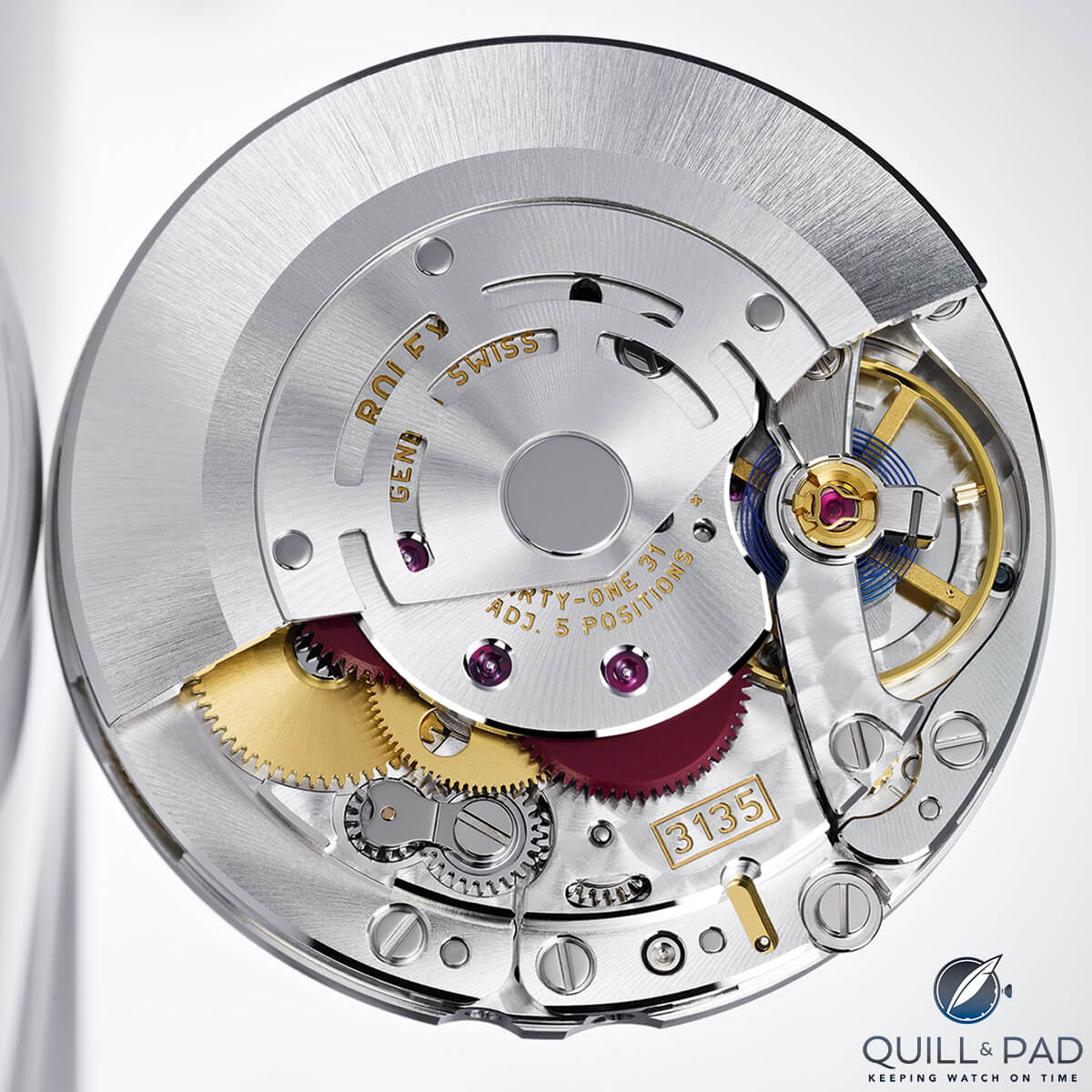
Rolex Caliber 3135
Ask watchmakers and the story will be the same: it has stood the test of time for both them and for the consumer. I haven’t met a single watchmaker who doesn’t love working on the Rolex 31x series of calibers. They are easy to service, keep great time, and stand up to abuse.
Put simply: they work.
However, in 2015 Rolex introduced us to the new kid on the block: Caliber 3255, which is an upgraded day and date movement. Shortly thereafter we met the 3235, the date-only variation.
Together, they would be the Rolex answer to the modern horological landscape with the 32x family being rolled out across the collection. And it’s safe to assume the 31x family will be entirely retired over the next few years.
With Rolex claiming on its website a 70-hour power reserve, 14 patents, 90 percent new components and a performance increase of 15 percent, customers are excited. Who doesn’t love improvement?
That is, after all, how we got to where we are today. Are perceived improvements always better? Are the technical advances in modern horology always beneficial? How do they affect the end consumer? What about the watchmaker?
Having trained on the 3235, I can say with all honesty that it is a beautiful piece of engineering. The finish is spectacular and the construction second to none, which makes this caliber a breeze to service. I’m happy to repair them all day long.
Yet again, Rolex has produced another watchmaker-friendly movement that will be loved the world over. The timing results are truly impressive, and the power reserve performs as stated. True to form the consumer is happy, and the watchmaker is happy. Rolex has hit it for six, just like in 1988.
However, great results often come with some sacrifice.
So what is the cost of the 3235’s remarkable statistics? Is it truly that much better than its formidable big brother? Let’s examine the two.
The Rolex Chronergy escapement in Caliber 3235
The first way Rolex has managed to increase power reserve is via the Chronergy escapement, a modern take on the Swiss lever variation. The escape wheel is pierced, which makes it lighter, and this in turn reduces inertia.
The pallet stones “are half as thick” as in the 3135, but the contact surfaces of the escape wheel have doubled in size. Escapement elements are no longer in alignment but “offset to increase the lever effect.” The escape wheel and pallet fork are made of nickel-phosphorus (LIGA) to avoid interference by magnetism.
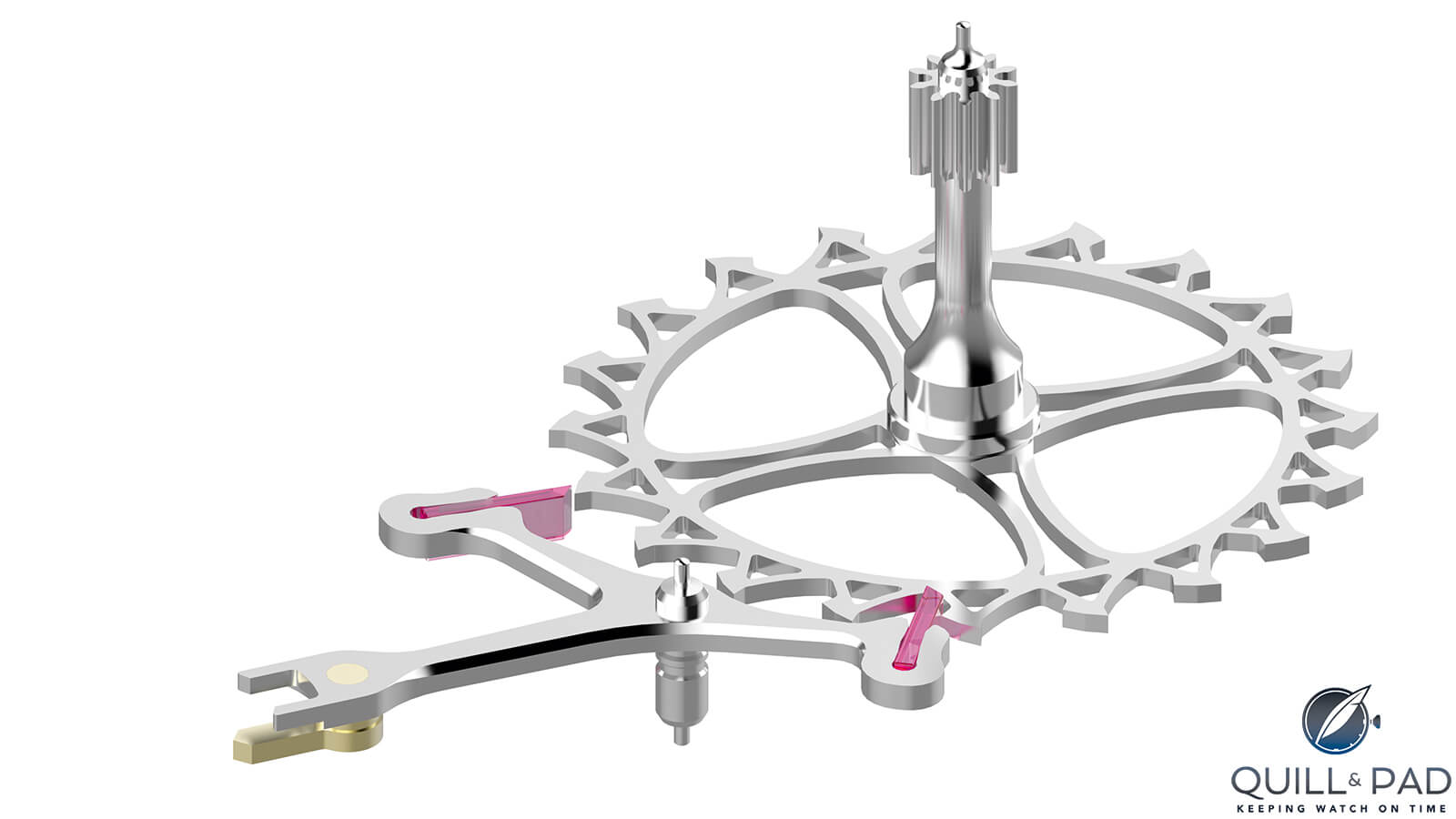
Rolex Chronergy escapement
All these modifications help to increase the efficiency of the escapement by 15 percent and account for almost half of the increased power reserve. Or so they say.
Let’s break it down by firstly discussing the claim of a 15-percent performance increase. The LIGA-formed pierced escape wheel is a step up; its inertia will be reduced and therefore does not require as much energy to start up at every beat, so an increase in performance is really there.
Secondly, Rolex claims that halving the thickness of the pallet stones (we presume that means width) and doubling the contact surfaces of the escape wheel leads to an increase in efficiency, along with all the other factors, but without providing an explanation as to why.
The overall contact surface is exactly the same if one had been doubled and the other halved, so friction would not be reduced, leaving you with the same degree of efficiency as a regular Swiss lever in that aspect. The pallet stones being halved in width would reduce drag due to oil viscosity, which would improve power delivery to the balance, which is an increase in efficiency.
The escapement geometry is a little trickier to quantify. Rolex claims “the escapement elements are no longer in alignment but are slightly offset to increase the lever effect.” Without receiving further clarification about precisely what that means, it’s difficult to judge the truth of this.
The claim of avoiding magnetism is well founded, although the pallet frame in the 3135 is also nonmagnetic. Trust me, I’ve spent plenty of time on the ground searching for dropped ones! A step up to an nonmagnetic escape wheel is a good thing because a steel escape wheel retains its magnetism even after it has left the field of interference.
Having compared the two, I still believe the Chronergy escapement to be a move in the right direction. It may have claims that are difficult to verify, but it definitely has improvements in efficiency and power reserve and most importantly it doesn’t adversely affect the customer.
Escapement checks are still performed as normal and adjustments would be made in a similar manner; also, components don’t wear any more quickly than in a regular lever escapement. If we keep score, it would be 1-0 in favor of the 3235.
High-capacity barrel
The second way the added power reserve has been achieved is via the barrel. Larger diameter barrel = longer mainspring = longer run time. That’s the formula followed.
However, to keep size down the barrel wall thickness has been decreased by half so as not to make the movement excessively large.
Clever engineering, I must admit. When next to the 3135 this does seem like a step up. But we must always ask at what cost.
The wall being decreased by half means that changing the mainspring is no longer an option. There is no safe way to remove and reinstall the mainspring without damaging the barrel.
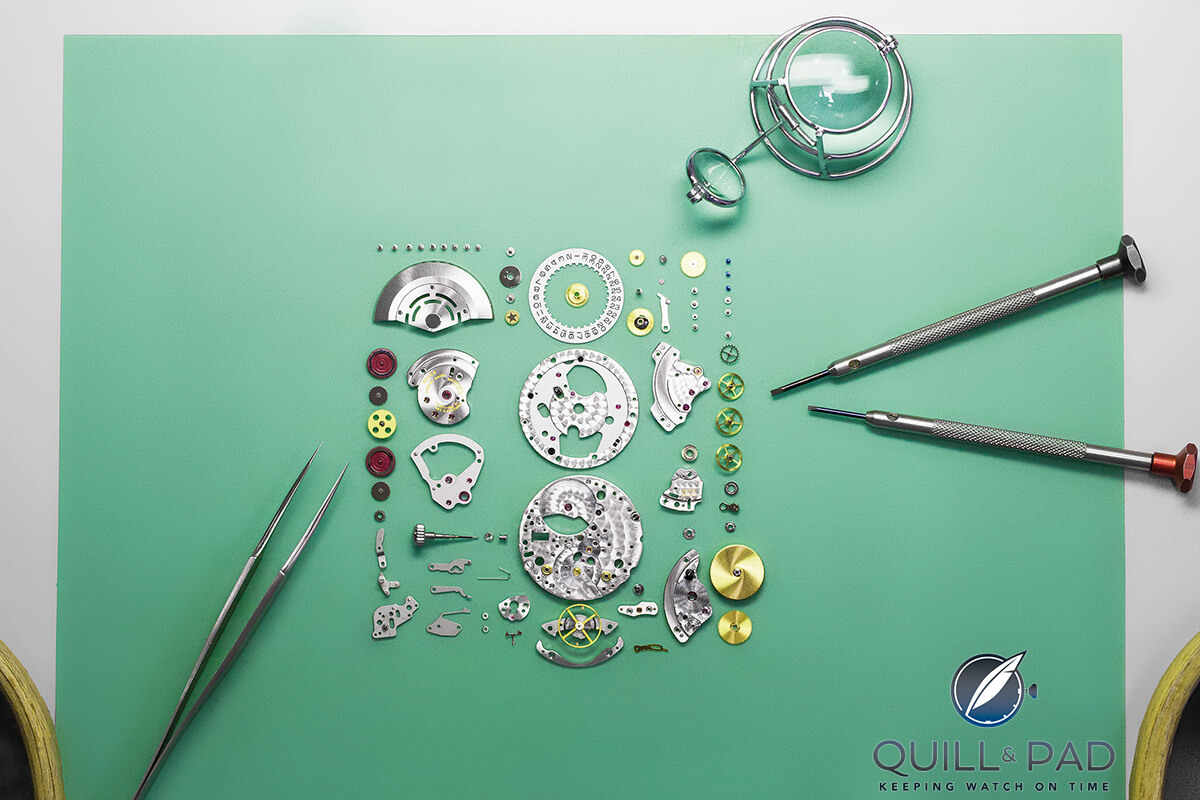
Rolex Caliber 3135 disassembled; note the red Teflon-coated gear wheels (photo courtesy The Watch Gallery)
If a 3135 had a mainspring grinding along the barrel wall, the fix was simple: remove the mainspring, polish the bridle, lubricate the barrel wall, and reinstall. But this is no longer the case with the 3235: it’s replace, replace, replace.
You will be told that all new barrels work right out of the packet, but this is rarely the case for any caliber. Typical complete barrels regularly need adjusting when new due to mainspring bridles not being polished correctly, causing the watch to knock.
So the replace mentality isn’t always the best option. A barrel can outlast a mainspring by many years. That family heirloom you were leaving to your grandchildren is now at the mercy of the manufacturer. How long will parts supply be supported – 30, 40, 50 years?
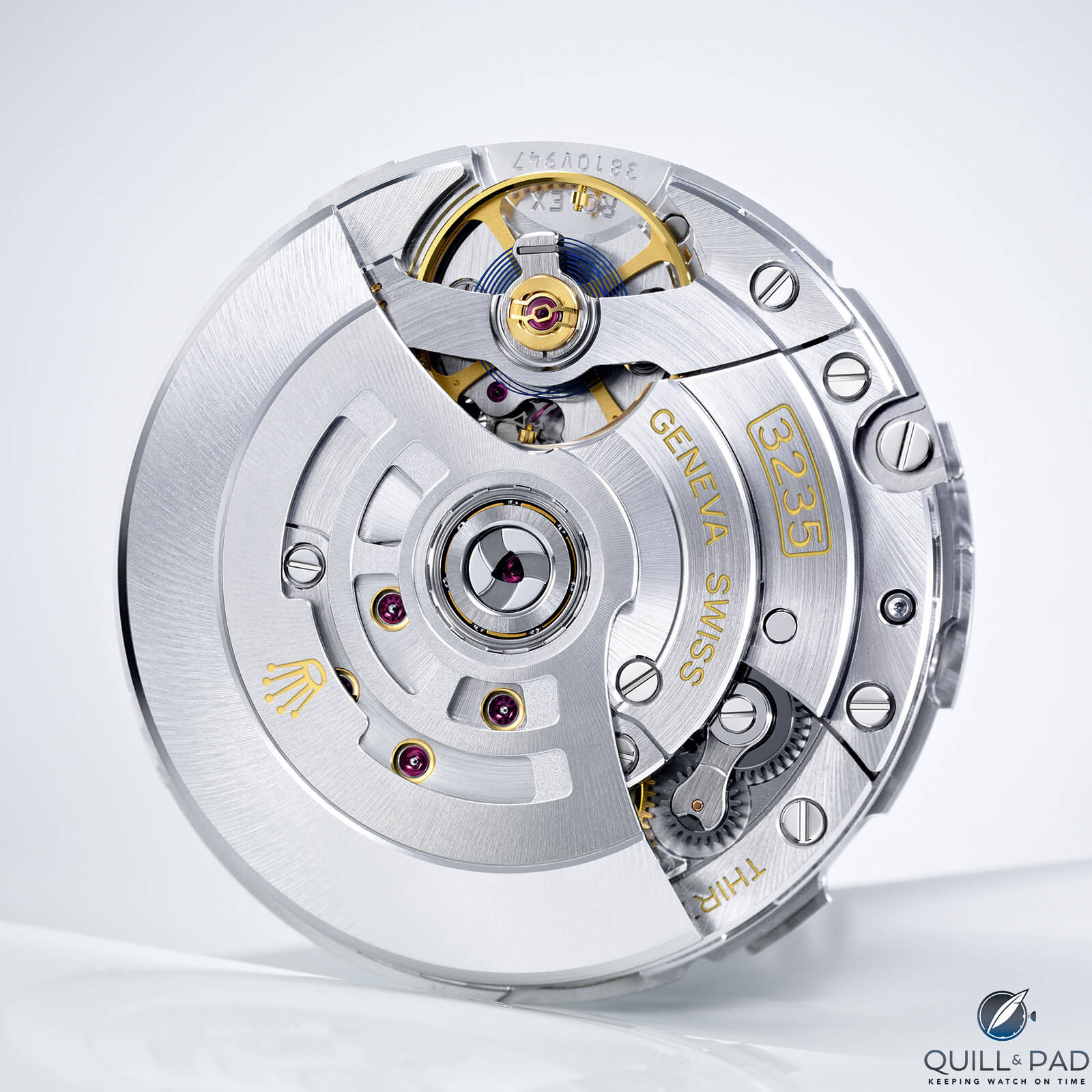
Rolex Caliber 3235
Another factor to consider is that the 3235 has a movement diameter of 28.5 mm. Let’s compare this with a 4130, the in-house Rolex chronograph movement, which also has a power reserve of 70 hours.
There is no Chronergy escapement here; Caliber 4130 contains a standard lever escapement. Admittedly, it is 2 mm larger in diameter, coming in at 30.5 mm; however, it incorporates a three-register chronograph.
How did Rolex achieve this this feat? By installing a longer mainspring into a barrel with regular-sized walls. This barrel doesn’t need replacing every service – a new mainspring will do just fine.
So why couldn’t this have been an option for the 3235? Perhaps to make the servicing and the acquisition of parts more difficult? Perhaps there was truly no more space to install a larger barrel? I’ll let you be the judge of that one.
Increased power reserves are definitely a win for the customer: people don’t enjoy having to set their watches frequently, which can become tedious.
Additionally, the less the wearer has to adjust his or her Oyster watch, the less likely water-resistance problems will arise. I have no issue with a modern caliber outlasting an older counterpart by many more hours, but I do take issue with the way it has been achieved in this particular case.
Now we’re tied at 1-1.
Balance assembly
The balance in Caliber 3235 is fairly similar to that of the 3135. It’s fitted with a Parachrom balance spring and Paraflex shock absorbers. This is the same setup as a modern 3135 fitted into a Datejust II, so no real change there.
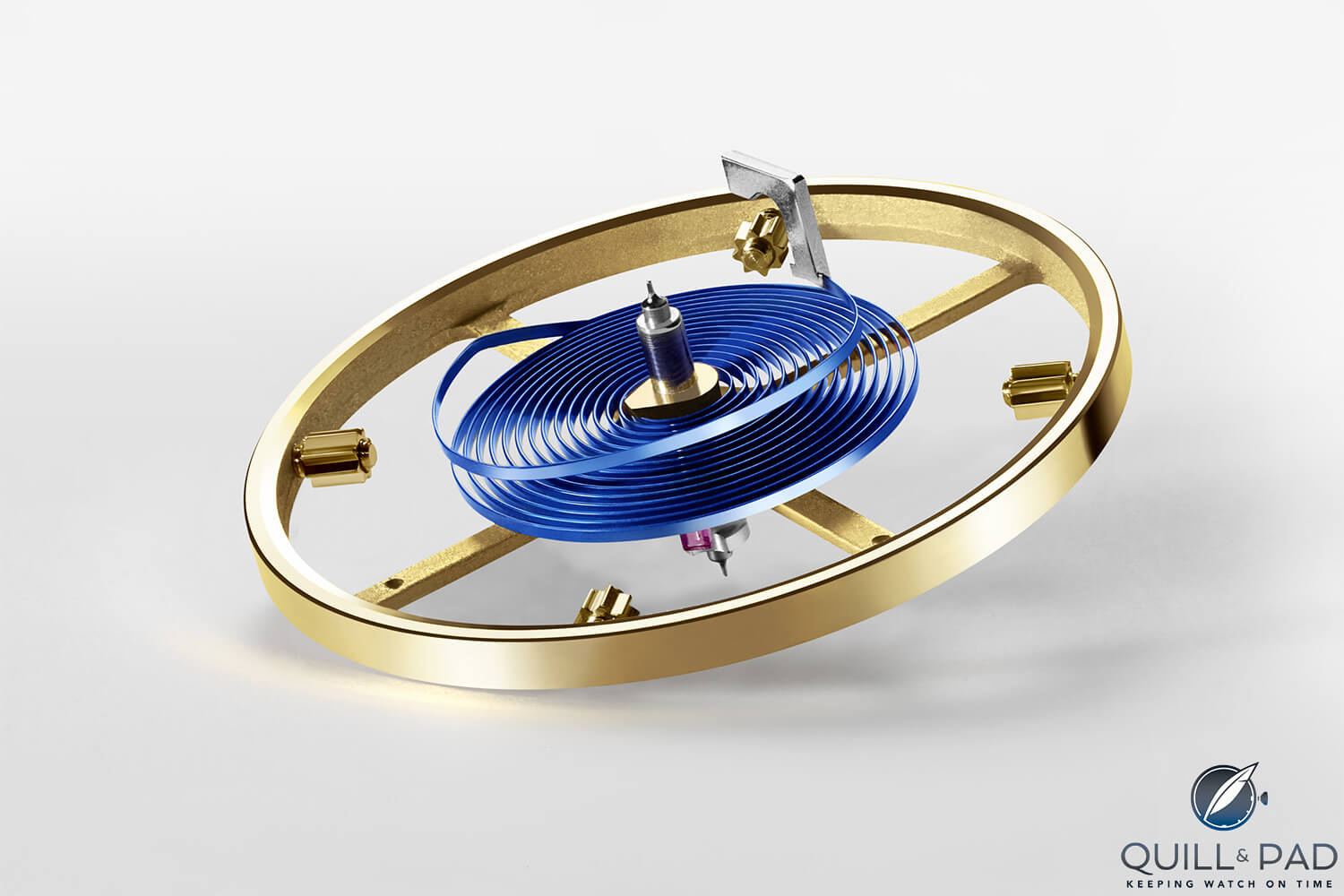
Rolex Parachrom hairspring
However, the 3235 does come fitted with a new take on an old classic: a friction-fit balance staff. No more riveting balance staffs to the balances, making sure you aren’t hammering them out of flat, no checking to see whether the rivet actually holds.
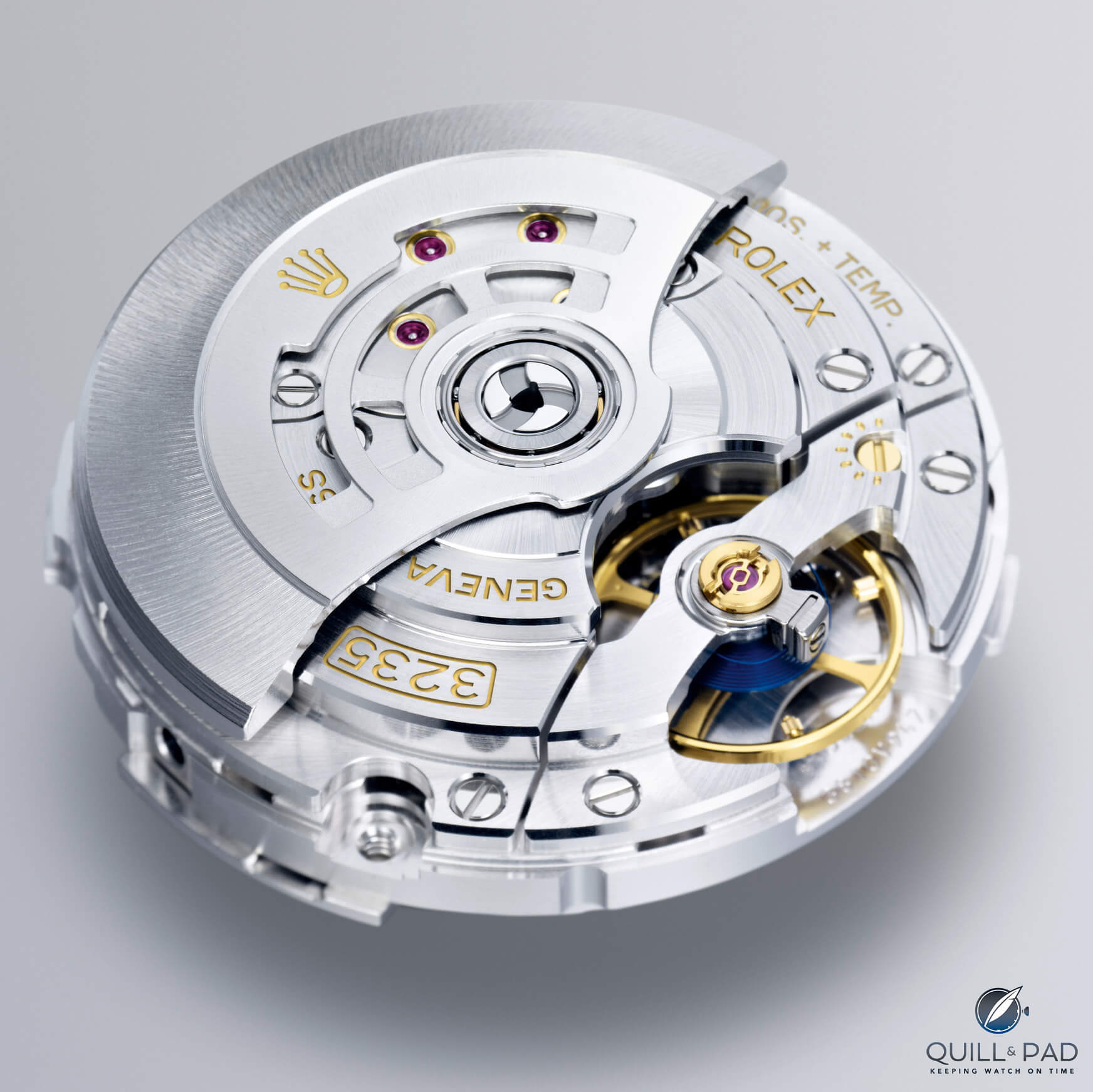
Rolex Calibers 3235
Rolex claims that the balance will not need poising every time, and that is a claim that I can verify, having changed many of these balance staffs, only around half of which needed poising.
I have to say this is a great feature and fun to play around with. It is a part that can still be hand-turned if required and will ensure a greater lifespan to a balance. There is no risk of cutting too far when turning off the rivet in the lathe or hammering out the existing rivet. This is a great modern feature that will serve the industry well. It won’t be the last friction-fit balance staff we see.
Now it’s 2-1 to the 3235.
Perpetual rotor
Axle vs. ball-bearing, the great debate. Rolex now claims it has “accelerated self-winding.” There are two main differences between the 32x and 31x rotors, the first being ball bearing as opposed to axle, and the second is monobloc (one piece) as opposed to a riveted two-piece rotor.
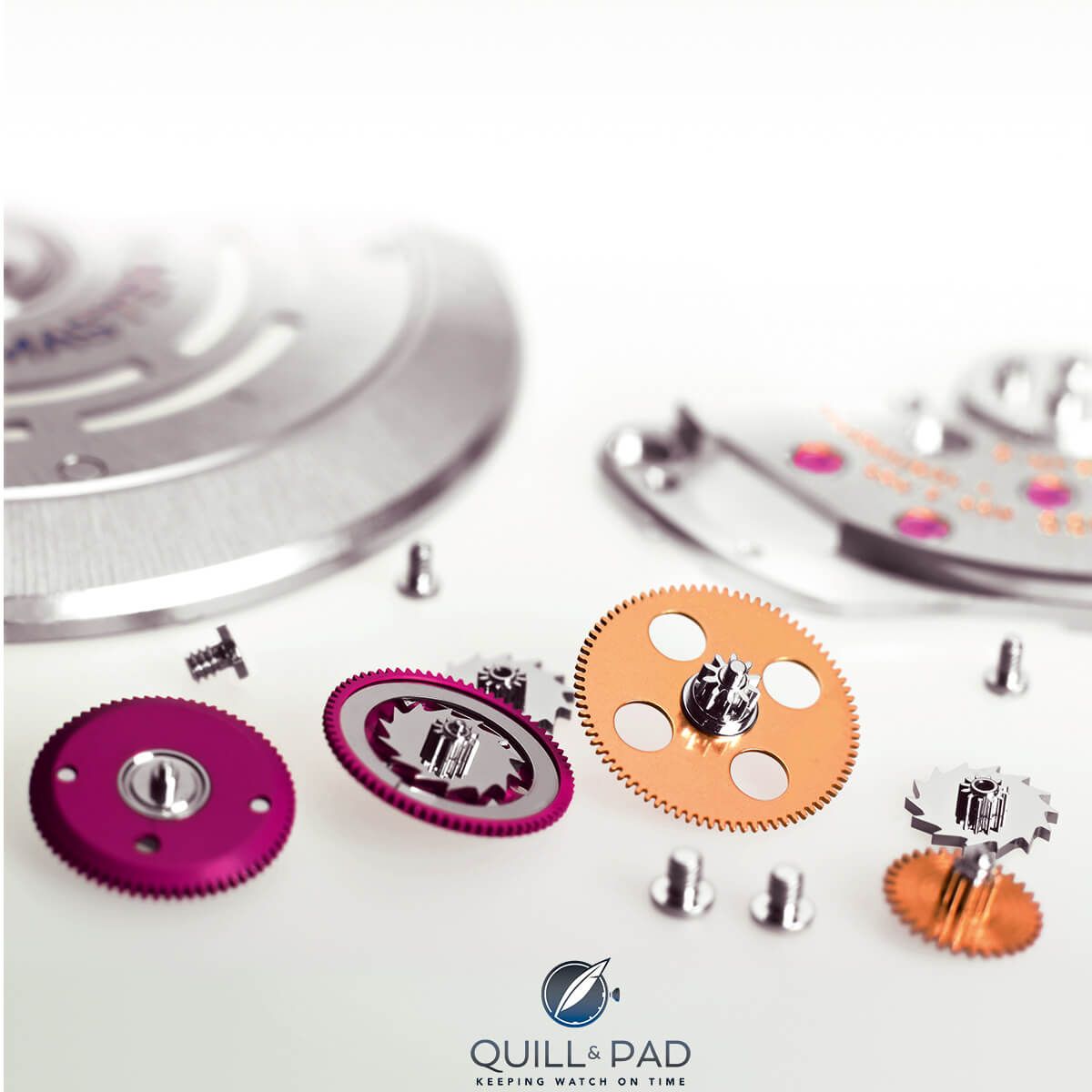
The components making up the bi-directional winding system of Rolex Caliber 3135
A monobloc rotor is a nice feature; on very rare occasions two-piece rotor assemblies do come apart, so this entirely eliminates the possibility of that.
Ball-bearing rotors have their advantages and so do their axle counterparts. A rotor with ball bearings requires very little lubrication; in fact if too much lubricant is added to the ball bearings, automatic winding will become sluggish fairly quickly.
Axles on the other hand require larger amounts of lubrication to function longer. The main issue with axles is they constantly come back dry and worn out, a grinding paste having formed, the entire movement is covered in a powdery mess and in desperate need of an overhaul.
Rolex has now eliminated this issue, but let’s look at the cost. I like a ball-bearing rotor and I think it works well but over time a ball bearing can become sloppy and need replacing.
Replacing a ball bearing assembly is a breeze in an ETA Caliber 7750 or 2892. In fact, it would take about the same amount of time and be the same cost as an axle in a Rolex, but sadly that isn’t an option in the new 3235.
It cannot be changed, it is not a part you can order, nor is it something that can be removed without damaging the rotor. A rotor in a mechanical watch works hard; it takes a beating and because of that ball bearings need replacing regularly, but that won’t be the case in your shiny new Datejust 41. You’ll be changing the whole thing.
So which is better? An axle that turns to grinding paste is bad. It can cause chaos in a watch; the loose rotor can damage the inside of a case back or even grind away at main plates. But so can a ball-bearing rotor that has worn out and been neglected.
The main cause for concern is train wheel pivots being cut and ending up like mushrooms. With a ball-bearing assembly this wouldn’t be a problem. I will argue, though, that when it comes to longevity, it is easier to re-pivot a train wheel than to fabricate a whole rotor assembly.
If the ball bearing had been replaceable, I would have to go with the 32x on this one, but I really think Rolex missed the boat here. 2-2.
Conclusion: which is best, Caliber 3235 or Caliber 3135?
Now we’re in overtime: it’s 2-2. After examining the two calibers in some depth, which comes out on top?
There is no denying the 3235 is a beautiful, aesthetically pleasing piece of horology. Rolex has done well and should be proud. Anyone purchasing a watch equipped with said movement will have made a wise choice and can be proud of the motor under the bonnet.
The advances in the 3235 are in line with the horological landscape today, which makes use of modern manufacturing techniques to achieve advances in escapement engineering, materials that are lighter, more antimagnetic, and more efficient.
But where does it stand next to its big brother? Is he faster, stronger, more intelligent, and better looking? Well, he is better looking. I would even say he’s faster, but when it comes to strength and intelligence the 3135 takes it every time.
Even though the score was 2-2, in my opinion the 3135 still comes out on top. It’s long-lasting, it’s proven, and it can be repaired for decades to come even if parts supply is discontinued. It doesn’t require excessive replacement of costly parts, which makes it watchmaker and customer friendly.
The 3235 is a great movement, there is no denying that. But its speed and looks can’t compare with the strength and intelligence of its older brother. Strength and intelligence are the qualities of a great king, thus for me the 3135 reigns supreme.
Quick Facts Rolex Caliber 3135
Diameter: 28.5 mm
Jewels: 31
Power reserve: 48 hours
Frequency: 4 Hz/28,800 vph
Winding: automatic
Hairspring: Parachrom
Escapement: Swiss lever
Certification: C.O.S.C. chronometer
Quick Facts Rolex Caliber 3235
Diameter: 28.5 mm
Jewels: 31
Power reserve: 70 hours
Frequency: 4 Hz/28,800 vph
Winding: automatic
Hairspring: Parachrom
Escapement: Chronergy
Certification: C.O.S.C. chronometer
* This story was originally published in the April 2018 edition of Horological Journal. It has been reprinted with permission.
You may also enjoy:
A Look Inside The Rolex Caliber 3135
Rolex Submariner Deconstruction Video: Warning, Don’t Try This At Home.
The Number Of Jewels In A Watch Movement Indicates Value, Doesn’t It? A Myth Debunked
Exceptional Movements In History: Rolex Caliber 1575, The Watchmaker’s Watch
Leave a Reply
Want to join the discussion?Feel free to contribute!



Love the way you think. 👍
Steven A.